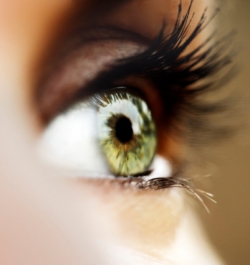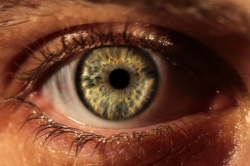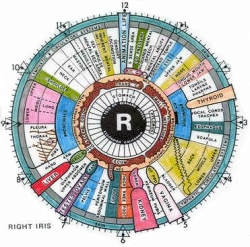
What is Iridology ?
Iridology is the inspection of the iris of the eye as an aid in determining a persons state of health.
The iris contains many nerve endings which are connected to the optic nerve, the base of the brain, and all of the bodily tissues. Hence, the neural circuitry of the eye are able to express the continuity of the body, an integrated unit composed of various cells which all communicate with each iris about their overall wellness. A weakness in body's tissues or organs often show up in the eye before they show up in medical tests! Iridologist will conduct a non-invasive analysis of the iris of each eye and provide an accurate assessment of your relative state of health as well as recommendations based on the findings.
Benefits of Iridology
By studying the patterns of a person's iris, they can provide helpful and accurate health and wellness information. iridology is a holistic endeavour in that it addresses the person's whole being in the reading. The range of information gleaned encompasses physical, emotional, mental, and spiritual aspects of the person's health picture. In addition to assessing the person's general level of health, readings can reveal other data, including energy quotients; internal areas of irritation, degeneration, injury, or inflammation; nutritional and chemical imbalances; accumulation of toxins; life transitions; and subconscious tensions. The eyes reveal information about the person's physical and emotional constitution, such as inherited weaknesses and risks to which the person may be prone. Strengths may also be revealed, including inherited emotional tendencies from which the person derives particular talents. Cleansing and healing can be verified by changes in the iris. By looking for certain signs such as healing lines, iridologists obtain information about previous health problems and injuries and discover what may have gone wrong in the person's past.
An iridology reading reflects the causes of problems, not symptoms. It may reveal that organs or systems are overstressed or predisposed to disease before clinical symptoms even develop. By predicting future problems, iridology can be used as a preventive tool. People can use the information from iridology readings to improve their health and make better behavioural choices in the future, thereby heading off problems before they occur.
Iridology Chart can show
STRENGTH OF CONSTITUTION
TOXINS IN THE BODY
WHICH ORGANS ARE WEAK
INFLAMMATION
STRESS AND FATIGUE
SEX DRIVE
INFECTION
RESISTANCE TO DISEASE
BOWEL PROBLEMS
NUTRITIONAL DEFICIENCY
Using Iridology to improve your health
Iridology is the practice of examining the iris of the eye for markings and discolorations in order to determine possible health problems they might indicate. Different sectors of the iris are said to correspond to different areas of the body. Different markings indicate possible vulnerabilities in those areas. Iridology isn't used to diagnose specific diseases or conditions. Rather, it's used to indicate potential problems in all areas of the body, including the heart, lungs, spleen, spine and kidneys. You can still use iridology to improve your overall health, however, by taking special care of those organs and systems your iridology reading deems vulnerable.

What To Expect When You Visit An Iridologist
When making the observation the iridologist may use any one or all of the following pieces of equipment – a slit lamp microscope; torch; magnifying glass or camera.
The observations that the iridologist makes are compared against ‘iris charts’ which split the iris into zones that directly relate to areas of the body. The underlying platform of iridology is that that eyes act as a ‘window’ to a person’s health & well being. This ‘window’ enables the practitioner to see whether areas or organs within the body are healthy, inflamed or ‘over active’. It also enables them to assess a person’s past/ possible future health problems & consider if the patient has a susceptibility to certain diseases.
It is important to understand that iridology is simply a method of diagnosis & analysis – it is not a therapy or treatment. It is however an effective alternative system of diagnosis which helps practitioners better understand & treat their patients & build a diagnosis.
Your Constitution Iridologists use the word constitution to describe the physical make up we were born with and inherited from our parents. If there is a history of medical problems in your family for instance asthma then there is a chance you may of inherited it. In iridology you either have a weak constitution or a strong constitution. If you are born with a strong constitution the fibers of the iris are very tightly together, therefore your body will stand up to problems well, if you were born with a weak constitution the fibers of the iris are separate and your body will not withstand too much abuse. Constitution is not an indication of how long you will live, when you know you have a weak constitution you can take steps to look after yourself.
Iridology Treatment
Nutrition plays an important part in iridology, when your body is weak it is susceptible to attack from virus and disease, if the body has a nutritional deficiency it will be weakened and the deficiency shows in the iris. After an iridologist has studied you iris pattern they will recommend a natural nutritional program to you that will restore the nutritional balance and strengthen you body. Iridology will not show a specific disease but it will show if their is a weakness in a certain area often before any symptoms have started so you can take preventative measures.
Iridologists generally use equipment such as a flashlight and magnifying glass, cameras or slit-lamp microscopes to examine a patient's irises
The
iris surrounds the center, or pupil. Light enters through the pupil and
is focused by the lens into an image on the retina. The nerves of the
iris are connected to a part of the brain known as the hypothalamus.
The
left eye is believed to correspond with the left side of the body and
the right eye with the right side of the body. In general, the higher
organs like the brain are at the top of the iris and the lower organs
like the kidneys are at the bottom.
